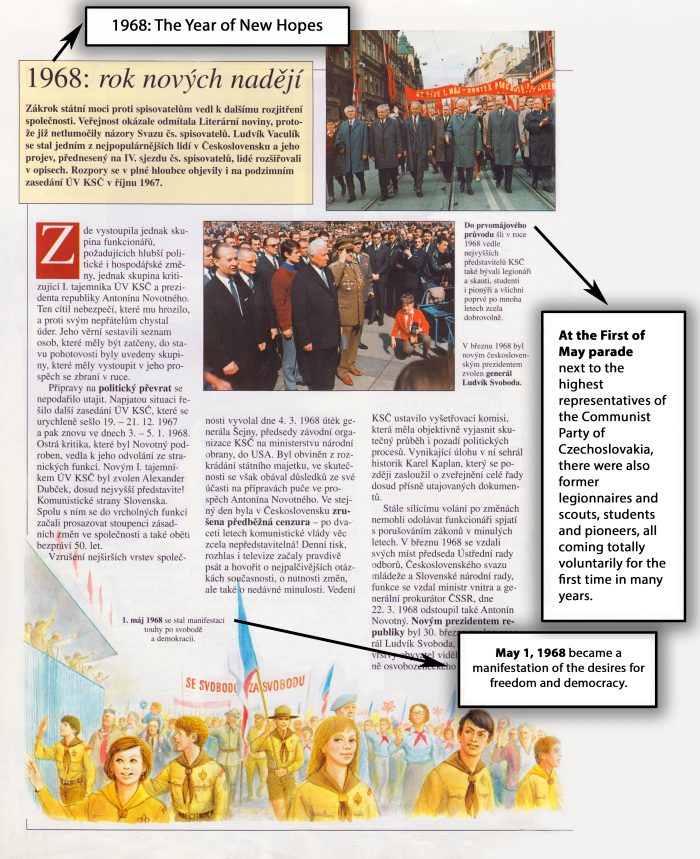Commentary
A page from a popular children’s book provides a simplified image of 1968 in Czech history. The authors focus on the May 1st celebrations in 1968 – for communist regimes, International Workers’ Day was always an opportunity to manifest their power and unity with their citizens. Participation in the parades was also required and monitored. According to witness testimony, however, the atmosphere in 1968 was different – individual people and groups came to express their support for the reform wing of the Communist Party. Groups whose organization had been forbidden also appeared in the parades – the scouts, for example, but also veterans of foreign units who fought for western powers in the First and Second World Wars.
Focus on the visual layout of the page and the short descriptions. The descriptions for the period photographs point to the diversity of the groups that joined the parade; the photo on its own, however, does not show a specific atmosphere – we just see a row of older men in formal suits. The question is whether the official photography tried to suppress the presence of the groups who had only recently become accepted. The author of the contemporary illustrations, who was supposed to show the hope of the Prague Spring, puts the scouts towards the front, ahead of the members of the official youth organisation, the “Pioneers”. The author tries to capture the symbolic idea of Prague Spring.

